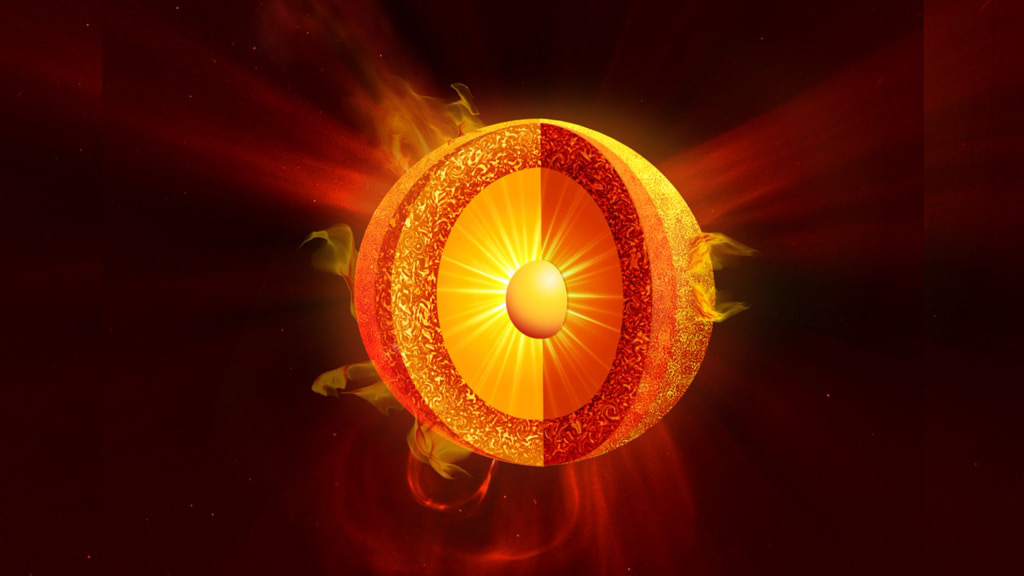Solar Structure
Much like the Earth, the Sun has gaseous layers in both the interior and atmosphere.
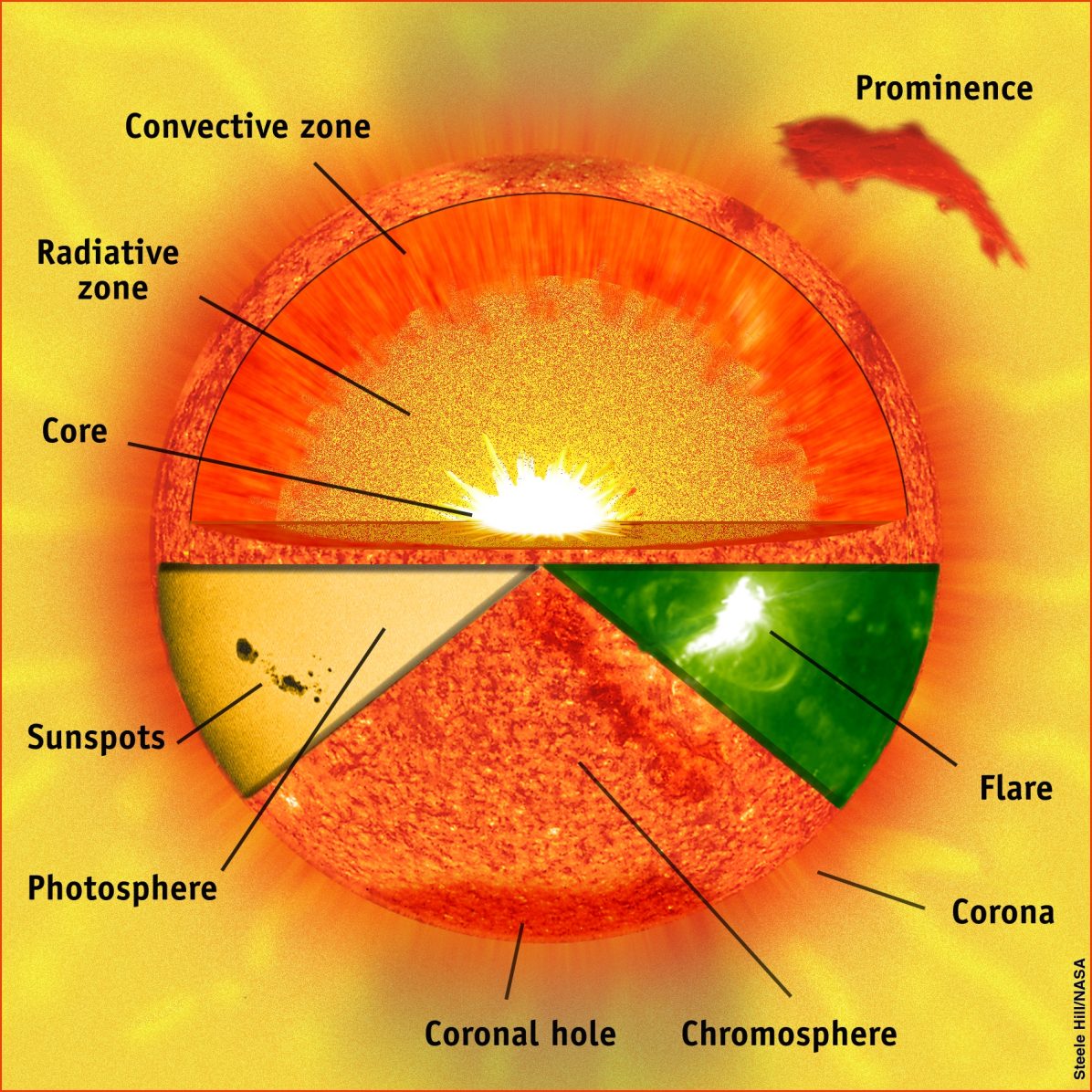
Particles of light form from atoms undergoing nuclear fusion in the sun’s innermost layer known as the core. The light then flows through the sun’s interior for millennia, slowly bubbling up like water in a boiling pot.
It eventually bursts past the sun’s surface, called the photosphere, and rises into the solar atmosphere. Once in the atmosphere—made up of the chromosphere and corona—the light streams out through the solar system.
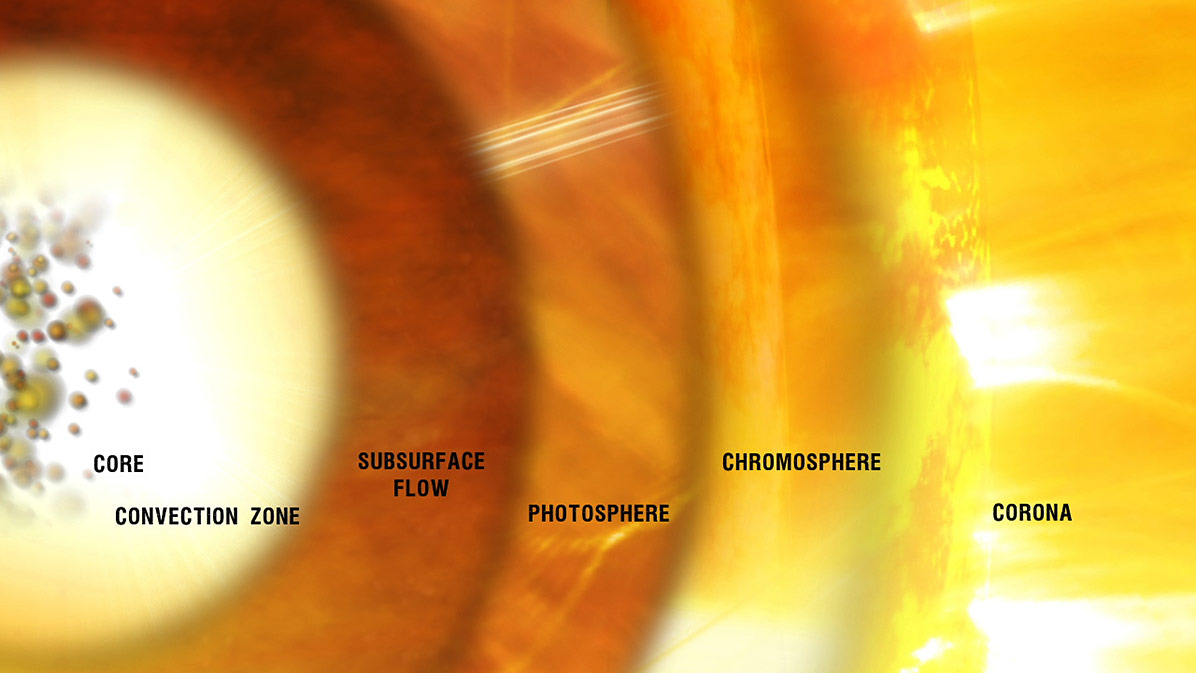
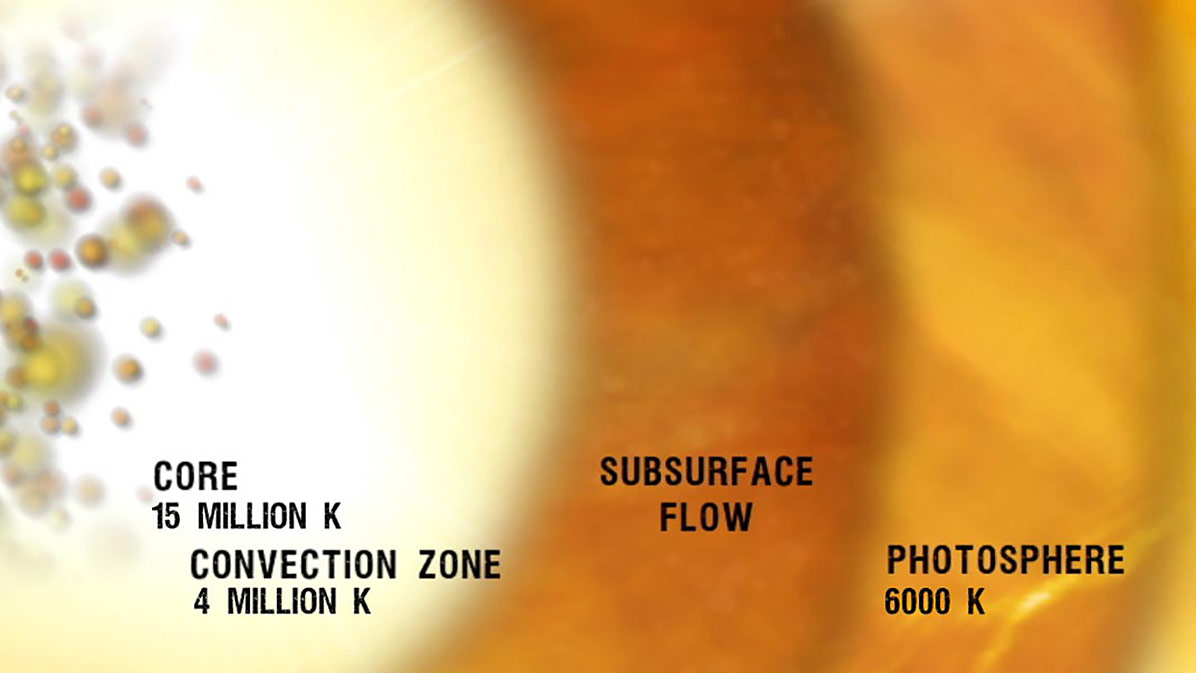
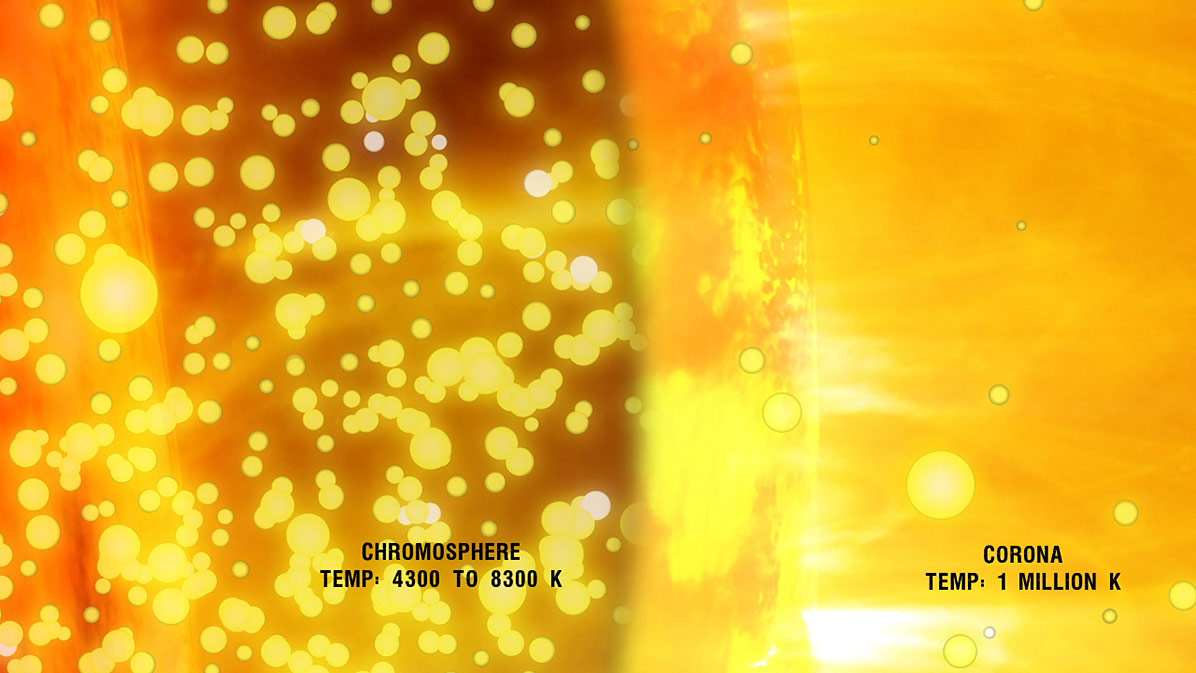
The light that illuminates our planet is made deep inside the sun and takes some 40,000 years to travel through the sun’s layers!
Inside the Sun
Core
This is the inner most part of the Sun. Here gravity has squeezed the Sun so much that hydrogen compresses together to form helium and release energy through nuclear fusion. All the energy that comes away from the Sun and all the reaches the Earth started in the core. The core is around 150 times as dense as water and has a blazing temperature of around 15 million degrees Celsius or 28 million degrees Fahrenheit.
Radiative Zone
This is the layer of the Sun above the super dense core. The density slowly decreases moving away from the core. Light produced by nuclear fusion in the core travels out in the shell called the radiative zone. This layer is not as dense as the core but it is still so dense that light from the core bounces around taking about 100,000 years to move through the radiative zone.
Convection Zone
This is the layer of the Sun above the radiative zone. When the density of the radiative zone becomes low enough energy from the core in the form of light is converted into heat. Much like the bubbles in a pot of boiling, the heat from the edge of the radiative zone rises until it cools enough that it sinks back down. This pattern of heated material rising then cooling happens in big bubbles called convection cells.
Solar Atmosphere
Photosphere
The material that reaches the top of the convection zone cools by giving of light. This region of the Sun is the first part of the Sun that is visible to us and we call it the photosphere. This is where the light we see from the Sun originates. If we could look at the Sun directly (never stare at the Sun without the proper equipment) we would see the photosphere. Even though the layer is not solid we call this part of the Sun the surface and it is also where the solar atmosphere starts. Its temperature is around 5,800 Celsius or 10,000 degrees Fahrenheit.
Chromosphere
Above the photosphere is a layer of the atmosphere about 2,000 km thick called the chromosphere. The temperature increases as you move higher to about 20,000 degrees Celsius (36,032 Fahrenheit) at the top of the chromosphere. The chromosphere is no longer white light like the photosphere but is mostly red in visible light. It can be seen as red flashes during a total solar eclipse.
Transition Region
The transition region is the area between the chromosphere and the uppermost layer of the sun’s atmosphere called the corona. The transition region is where the temperature rapidly rises.
The Sun’s corona is up to 500 times hotter than the visible surface!! BUT WHY?
Our Sun is surrounded by a jacket of gases called an atmosphere.
Corona
The Sun’s corona is the outermost part of the Sun’s atmosphere. The corona starts around 10,000 km above the solar photosphere. The corona is usually hidden by the bright light of the Sun’s surface. That makes it difficult to see without using special instruments. However, the corona can be viewed during a total solar eclipse.
Unlike the atmosphere of the Earth, the atmosphere of the Sun continues to get hotter as you move away from the solar surface. The answer of why exactly this happens is one of the biggest questions of astronomy and solar physics of the 20th and 21st centuries.
At 20,000-25,000 km away from the solar surface the corona has an average temperature of 1 to 2 million degrees Celsius (1,800,032 to 3,600,032 Fahrenheit). But the density is very low, about 1 billion times less dense than water.
